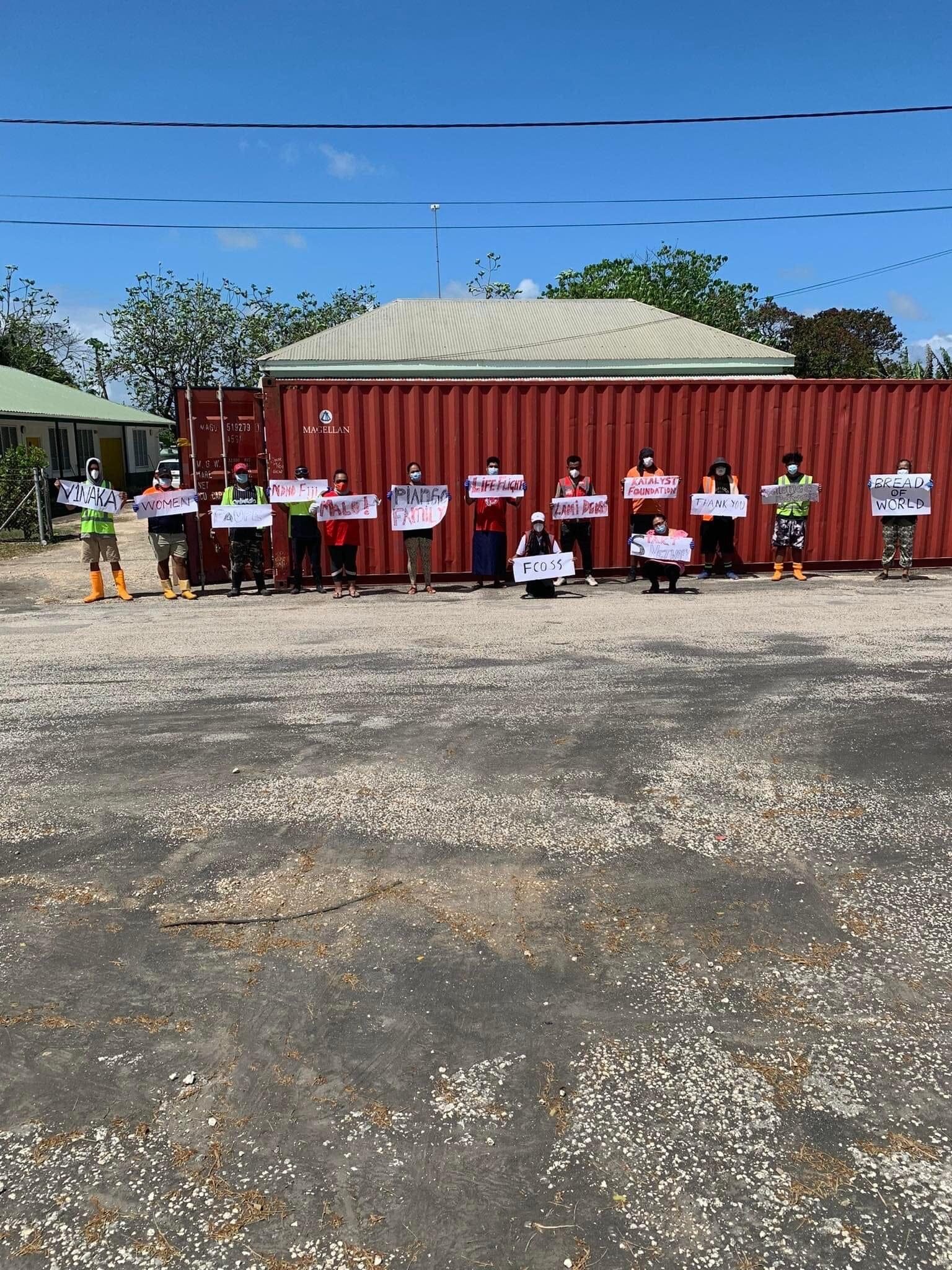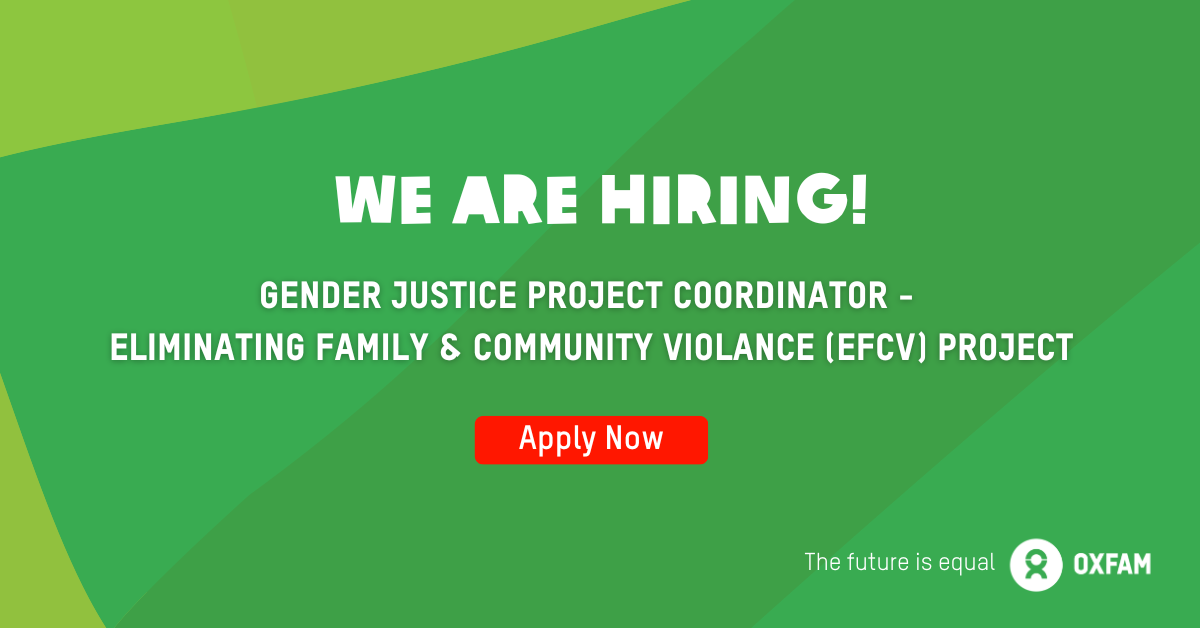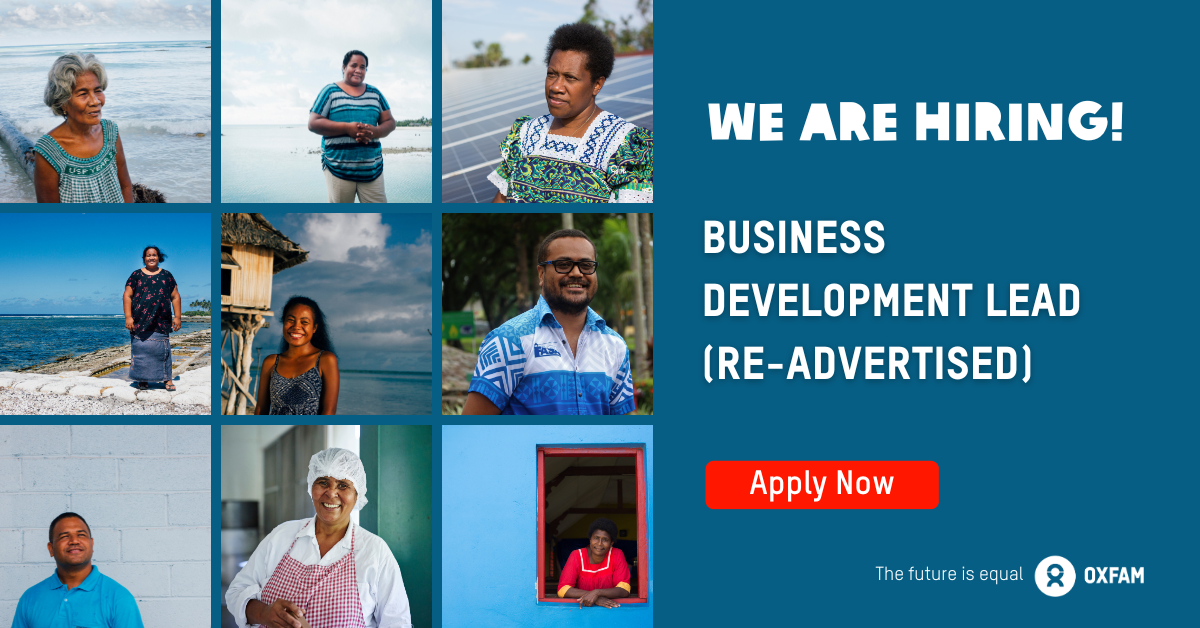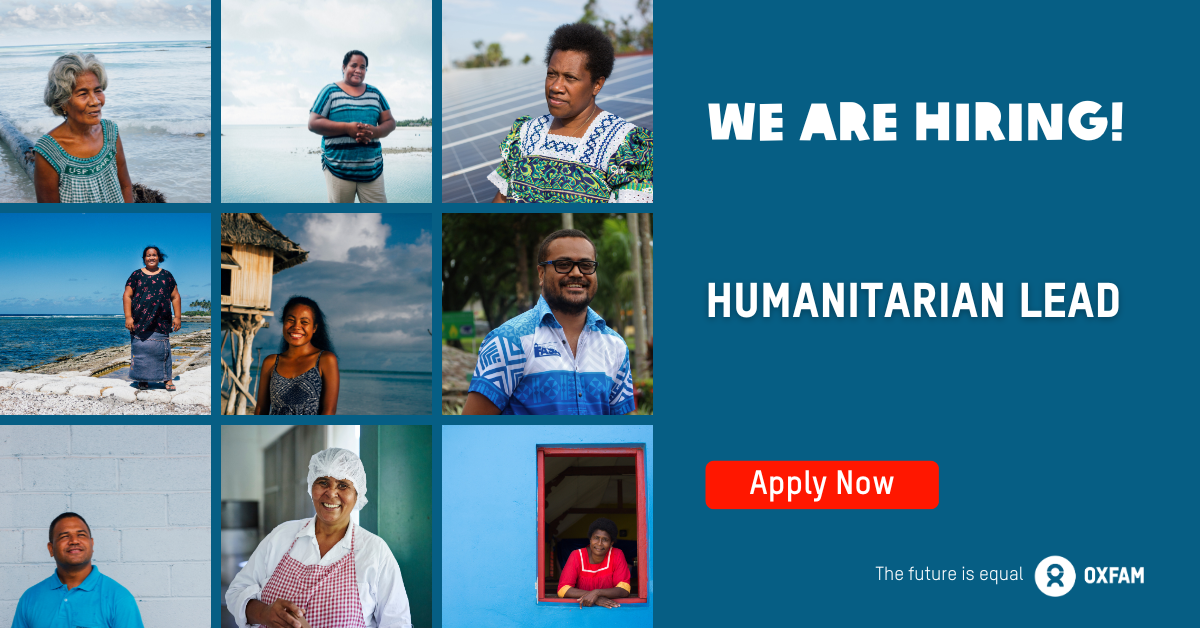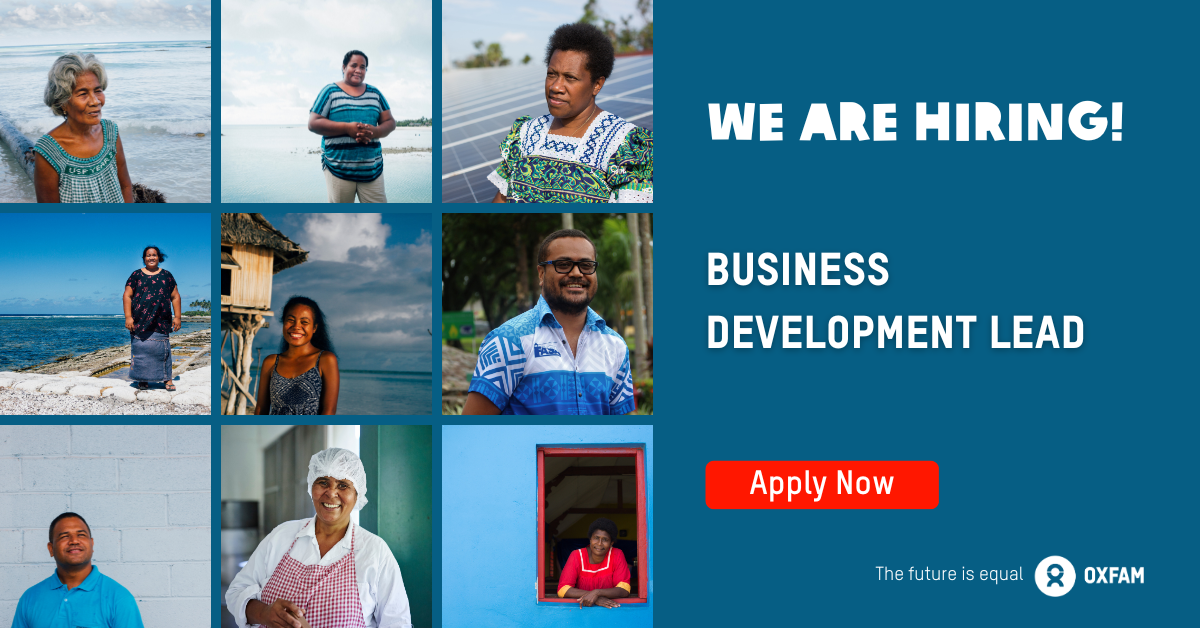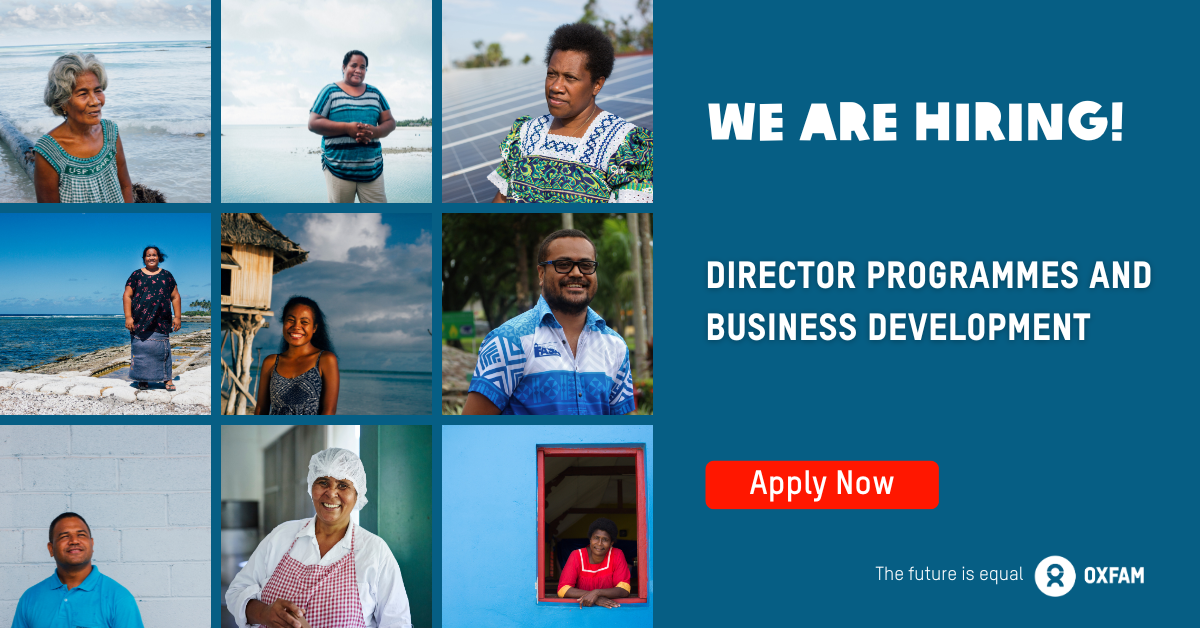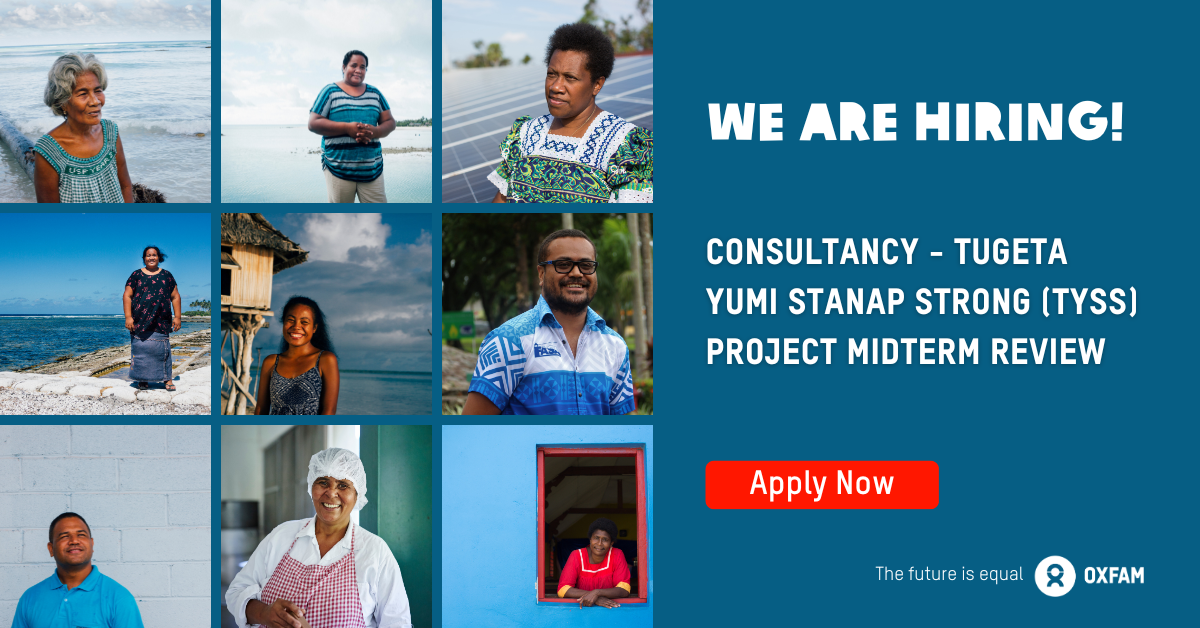This #WorldHumanitarianDay Oxfam in the Pacific looks back on our support to our partners in the Kingdom of Tonga following the eruption of the Hunga-Tonga-Hunga-Ha’apai volcano and tsunami on 15 January, 2022.
The eruption of the Hunga-Tonga-Hunga-Ha’apai volcano triggered tsunami waves of up to 15 metres which struck the West coast of Tongatapu, ‘Eua and Ha’apai in what may have been the largest volcanic event in three decades.
The Pacific Kingdom faced what the Tongan government called an “unprecedented disaster” following the massive volcanic eruption that covered the nation in ash, and the subsequent tsunami which destroyed almost all the homes on two small islands, the Tongan government said in a statement issued in the aftermath of the disaster.
Eighty-four percent of the population of Tonga were affected by the ashfall and tsunami, which claimed the lives of four people and forced many to relocate after losing their homes and belongings, and being faced with water and food shortages.
In addition, communications into and out of the nation were hampered by the severing of a major undersea cable which added a further obstacle to the provision of humanitarian support in the days and weeks following the disaster.
Oxfam has been providing humanitarian support to the Kingdom of Tonga through its partners on the ground, the Tonga National Youth Council (TNYC) and the Civil Society Forum of Tonga (CSFT). We spoke with Drew Havea, of the TNYC who discussed how TNYC and CSFT rolled out humanitarian assistance with Oxfam’s support, in the days and weeks following the Hunga-Tonga-Hunga-Ha’apai disaster.
- What are the most critical needs in communities that you serve? What has the TNYC done to support some of these needs since the volcanic eruption and tsunami?
[Drew Havea]: “Water was the big need because of the volcanic ash which went into almost all water tanks and contaminated the water. There was panic that there wasn’t enough water. This was when TNYC came in and Oxfam provided sky hydrants (portable water filtration Units) to purify the water. The TNYC was the only one able to do water purification, thanks to the sky hydrants. There was an urgent demand for clean, purified water for drinking, bathing, cleaning, clearing gutters. The TNYC was able to provide this with the support of volunteers trying to ensure that there were water stations in communities where they could access clean, purified water. This was a task, as one tank was not enough and in the first few weeks in the aftermath of the disaster, this was a huge task.
“Military ships then arrived to provide clean water. There was a huge demand and water was supplied from abroad as well – people from Fiji, New Zealand and Australia also sent water assistance to Tonga. The saving grace was that Oxfam was able to provide the sky hydrants which allowed the TNYC to roll out their support in the immediate aftermath of the disaster.
“The Tongan government opened up water holes to assist with water distribution however, some people didn’t like the taste of groundwater, hence the TNYC (through Oxfam), provided the desalination system. The elderly preferred this water to groundwater. TNYC also provided support to schools as well with the supply of clean water and supply of water bottles and so on.
“Access to water was still an issue with the elderly and the disabled in April 2022, so we have tried to establish community water tanks, however, the elderly and disabled still find it difficult, particularly during COVID lockdowns when there is no access to transport and they were unable to move around without transport. TNYC then manually distributed water with water buckets to the disabled and the elderly and those who didn’t have water tanks.”
- Are there any groups that have been worse affected by the situation, for example farmers, fishers, persons with disabilities, etc.? If so, please elaborate.
[Drew Havea]: “There are those who have lost everything – four islands were evacuated. Their whole population was displaced and living in church halls in Nuku’alofa. Some moved in with families and there is overcrowding – there was one household with 84 people with several families having moved in. These families have erected tents outside their homes. It puts a lot of pressure on families. Some CSOs have been providing psycho-social counselling for those who’ve been affected and displaced.
“All those who’ve been displaced are fishermen from outer islands. Their livelihoods have been affected. They don’t have farming skills. Their whole lifestyles have changed. They have children who need to go to school. The government has promised them housing/shelter but this will take time.”
- What do you suggest are effective ways to support livelihoods that have been affected by the crisis?
[Drew]: “The CSO Humanitarian Coalition was set-up in Tonga so that response services were not duplicated. Members include the Red Cross, Crisis Centre, Caritas, Ma’afafine (elderly), community women leaders. The Coalition was supporting farmers with a “Cash for Crops” programme, trying to provide livelihoods for farmers. The “Cash for Crops” programme ran for a month before sea water inundation affected the crops. The Coalition is also supporting women with weaving to support livelihoods by providing raw materials like pandanus.
“This is the first time that Tonga has had so many displaced people. They have lost everything except the clothes on their backs. Water will be a big issue in Ha’apai so TNYC will look at deploying their desalination system there as well.
“The challenge is to ensure that vulnerable groups do not fall through the gaps – the disabled, the elderly and vulnerable. We have to keep track of this. Most of them are not comfortable to ask for help for fear of being refused because they may have been supported through the system a few times. Sometimes these people feel more comfortable not saying anything. The CSO Humanitarian Coalition (which TNYC is part of) has community contact points and works with partners to ensure that these people are taken care of (WASH, portable toilets etc).
- Has TNYC undertaken an assessment of the needs on the ground? Do you have the capacity to conduct one? (Government has done this at the national level).
[Drew Havea]: “TNYC was part of the team who did the assessment, but the assessment was on the area impacted by the tsunami. It was an agricultural assessment. There needs to be a better assessment system. COVID has made it more complicated and people have lost jobs etc. These are groups that TNYC is trying to help – they are not on the list of those who are affected.”
- How has the support provided by Oxfam facilitated your humanitarian work on the ground? How has this supported Tongan communities?
[Drew Havea]: “The whole water response was provided through Oxfam – The sky hydrants etc. TNYC is also working with Oxfam on Cash for Food and providing support to livelihoods and recovery. TNYC are also grateful for the moral encouragement and support from Oxfam. A small emergency fund from NZ (Tonga $70,000) was given to CSFT’s humanitarian hub – some went to TNYC and some to other organisations but it enabled TNYC to deploy support to communities in the first month after the disaster. Oxfam needs to look at having a humanitarian response fund in country and not waiting for a disaster to happen first.”
*Image credit: Civil Society Forum of Tonga

